If you suspect binocular vision dysfunction, consult an eye care professional for a comprehensive eye exam, including tests for binocular vision.
Signs of Binocular Vision Dysfunction (BVD):
- Frequent headaches or eye strain
- Double vision
- Difficulty reading or concentrating
- Fatigue during or after visual tasks
- Poor depth perception
- Nausea or dizziness
Binocular Vision Dysfunction (BVD) occurs when the eyes struggle to work together, leading to visual discomfort and various symptoms. If you experience persistent headaches, eye strain, or other symptoms listed above, it is advisable to consult an eye care professional for a comprehensive eye examination. Identifying and treating BVD can improve overall visual comfort and function.
| Signs of BVD | Description |
|---|---|
| 1. Headaches or eye strain | Persistent discomfort in the head or eyes during visual tasks |
| 2. Double vision | Seeing two images instead of one |
| 3. Difficulty reading or concentrating | Struggling to focus on written material or maintain attention |
| 4. Fatigue during visual tasks | Feeling tired or exhausted after activities requiring focus |
| 5. Poor depth perception | Difficulty judging distances or spatial relationships |
| 6. Nausea or dizziness | Feeling queasy or unsteady, especially during visual tasks |
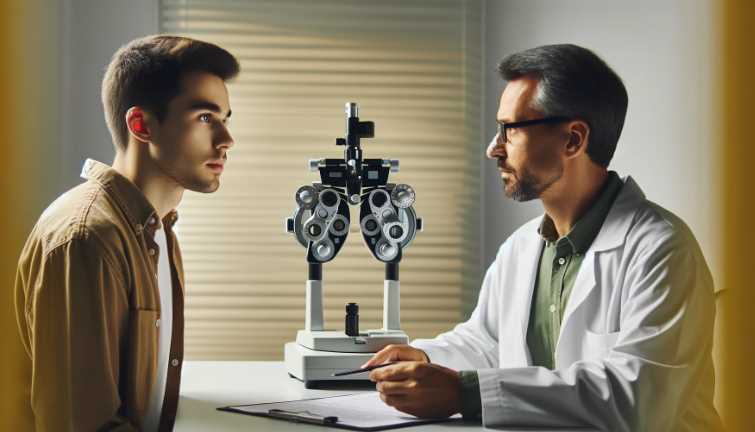
Signs and Symptoms
Visual Discomfort
The journey into BVD often begins with subtle discomfort – a persistent eye strain after hours of screen time, nagging headaches that refuse to abate, or an unexpected bout of double vision. It’s like trying to focus on a picture puzzle with pieces that won’t align.
Reading Difficulties
Reading becomes a battlefield. Words seem to dance on the page, skipping lines like a mischievous child playing hopscotch. The effort to concentrate is palpable, turning a simple book into a daunting challenge.
Depth Perception Issues
Judging distances turns into a guessing game. Stairs become potential obstacles, and an innocent stroll can transform into a clumsy dance with the surroundings.
Eye Movement Irregularities
Involuntary eye movements add a layer of complexity. The eyes wander, tracking moving objects becomes a struggle, and suddenly, the world feels like it’s in constant motion.
Causes of Binocular Vision Dysfunction: Unveiling the Roots
Developmental Factors
Binocular Vision Dysfunction (BVD) often has its origins in the delicate stages of childhood eye development. The intricate dance of genes and growth can occasionally misstep, leading to challenges in binocular vision.
Glitches in Childhood Eye Development
It’s in the early years that the foundation of our vision is laid. Anomalies during this critical period can manifest as BVD, impacting how our eyes collaborate. These glitches may go unnoticed until the demands of daily life reveal the strain on our binocular vision.
Genetic Predisposition
The genetic code we inherit contributes significantly to our ocular destiny. A familial history of vision challenges can act as a silent precursor, increasing the likelihood of BVD. Understanding this hereditary link becomes crucial in identifying and addressing potential issues.
Acquired Factors
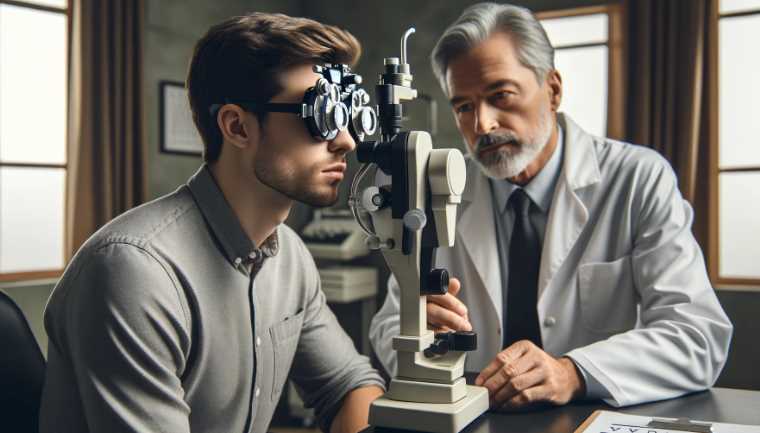
As life unfolds, unforeseen events or conditions can disrupt the harmonious collaboration of our eyes, leading to the emergence of Binocular Vision Dysfunction.
Trauma or Injury to the Head or Eyes
Head injuries, even seemingly minor ones, can send ripples through our visual system. The delicate balance maintained by our eyes can be upset, triggering BVD. Understanding the connection between trauma and visual challenges becomes imperative, especially for those recovering from accidents.
Neurological Conditions Impacting Eye Coordination
The intricate web of nerves orchestrating eye movements can be disrupted by neurological conditions. Disorders affecting the nervous system may manifest as irregularities in eye coordination, laying the groundwork for Binocular Vision Dysfunction.
Prolonged Near Work
In the digital age, where screens dominate our daily activities, prolonged near work has become a common lifestyle choice. However, this shift in our visual habits comes with consequences, with BVD emerging as a potential side effect.
Excessive Screen Time
The ubiquity of screens, from smartphones to computers, has revolutionized how we work and play. Yet, the strain imposed on our eyes during prolonged screen exposure can contribute to the development of BVD. Acknowledging the impact of excessive screen time is the first step in mitigating its potential consequences.
Reading for Extended Periods
The joy of diving into a good book or poring over documents for hours can inadvertently strain our eyes. Reading for extended periods without breaks taxes the eye muscles, potentially leading to Binocular Vision Dysfunction. Balancing our reading habits becomes pivotal in preserving our binocular vision.
Diagnosis of Binocular Vision Dysfunction: Navigating the Assessment Landscape
Eye Examinations
Seeking clarity on the status of one’s vision often begins with comprehensive eye examinations. These examinations serve as a foundational pillar in the diagnosis of Binocular Vision Dysfunction (BVD).
Comprehensive Eye Exams
Traditional eye exams extend beyond merely assessing visual acuity. They delve into the intricate workings of each eye, exploring their ability to function cohesively. From evaluating the clarity of vision to scrutinizing the health of the eye structures, comprehensive eye exams lay the groundwork for identifying potential issues with binocular vision.
Specialized Tests for Binocular Vision
To unveil the subtleties of binocular vision, specialized tests come into play. These tests go beyond the conventional eye chart, probing how the eyes work together. Assessing aspects like eye alignment, convergence, and depth perception, these specialized tests act as diagnostic beacons, revealing the intricacies of binocular vision.
Symptoms Assessment
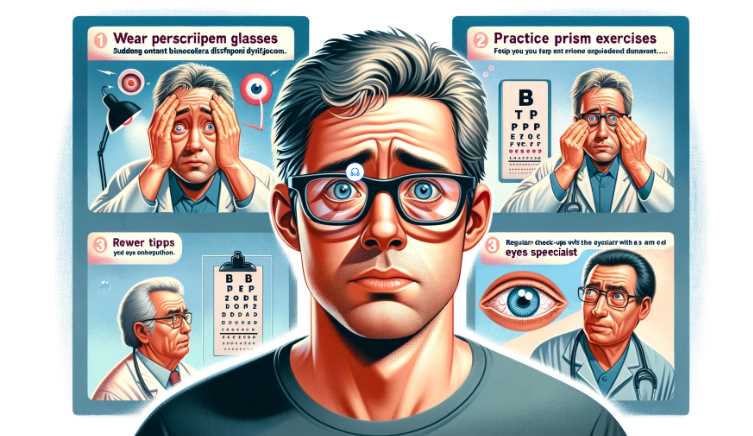
Beyond the clinical realm, understanding the patient’s experience forms a crucial aspect of diagnosing BVD. A nuanced exploration of symptoms provides valuable insights into the challenges faced by individuals navigating the complexities of binocular vision.
Patient Self-Assessment
Empowering individuals to articulate their experiences, a patient self-assessment becomes a vital tool. Simple questions about discomfort during visual tasks, headaches, or double vision offer a window into the daily struggles with binocular vision. This self-awareness lays the foundation for a collaborative diagnostic journey.
Detailed Discussion with an Eye Care Professional
The dialogue between the patient and the eye care professional transcends routine discussions. A detailed conversation delves into the nuances of symptoms, their frequency, and the impact on daily life. This discussion, often enriched by personal anecdotes, forms the bridge between the subjective experience of the individual and the objective clinical assessment.
Vision Therapy
Vision therapy, traditionally viewed as a treatment modality, emerges as a diagnostic tool in the realm of BVD. Its dynamic nature allows for a comprehensive exploration of the intricacies of binocular vision.
Overview of Vision Therapy as a Diagnostic Tool
Vision therapy transcends its therapeutic role to become a diagnostic ally. By engaging individuals in targeted exercises, it unravels the complexities of their binocular vision. The reactions of the eyes to these exercises offer valuable cues, guiding the eye care professional in understanding the nuances of the individual’s visual challenges.
How Vision Therapy Helps Identify Binocular Vision Issues
The dynamic nature of vision therapy illuminates the unique aspects of binocular vision dysfunction. As individuals engage in prescribed activities, subtle irregularities in eye movement, coordination, and focus come to the forefront. Vision therapy acts as a revealing journey, allowing the eye care professional to pinpoint specific issues with binocular vision.

How can I recognize symptoms of Binocular Vision Dysfunction?
Recognizing Binocular Vision Dysfunction involves paying attention to various symptoms, including:
- Eye Strain: Individuals may experience discomfort, fatigue, or pain in and around the eyes.
- Headaches: Frequent headaches, especially after visual tasks, could indicate potential BVD.
- Double Vision: Seeing double images, either occasionally or consistently, may suggest a problem with binocular vision.
- Difficulty Reading: BVD can make it challenging to focus on text, leading to words appearing blurry or moving.
- Poor Concentration: Individuals with BVD may find it hard to concentrate on tasks that involve visual attention.
Can children have Binocular Vision Dysfunction?
Yes, Binocular Vision Dysfunction can affect individuals of all ages, including children. Children with BVD may exhibit symptoms such as avoiding reading, rubbing their eyes frequently, or complaining of headaches.
How is Binocular Vision Dysfunction diagnosed?
Diagnosing BVD involves a comprehensive eye examination conducted by an optometrist or ophthalmologist. Various tests, including those assessing eye alignment and coordination, are performed to identify BVD accurately.
What treatments are available for Binocular Vision Dysfunction?
Treatment options for Binocular Vision Dysfunction may include:
| Treatment | Description |
|---|---|
| Prescription Glasses | Corrective lenses, such as prism glasses, can help align the eyes properly and alleviate symptoms of BVD. |
| Vision Therapy | Specialized exercises and activities aimed at improving eye coordination and strengthening the visual system. |
| Patching or Occlusion | Covering one eye to encourage the use of the weaker eye, helping to improve alignment and coordination. |
| Medication | In some cases, certain medications may be prescribed to alleviate symptoms associated with Binocular Vision Dysfunction. |
Can Binocular Vision Dysfunction be cured?
While there is no definitive cure for BVD, appropriate treatments can significantly reduce symptoms and improve overall visual function. Early diagnosis and intervention play a crucial role in managing the condition effectively.
How long does it take to see improvements with treatment?
The timeline for improvement varies from person to person. Some individuals may experience relief soon after starting treatment, while others may require more time. Consistent adherence to prescribed treatments and follow-up appointments enhances the likelihood of positive outcomes.
Are there any home remedies for Binocular Vision Dysfunction?
While professional guidance is essential, certain activities may complement treatment, including:
- Eye Exercises: Practicing simple eye exercises as recommended by a healthcare professional.
- Good Lighting: Ensuring proper lighting when engaging in visual tasks.
- Regular Breaks: Taking breaks during prolonged periods of reading or screen use to reduce eye strain.
Can BVD lead to other eye conditions?
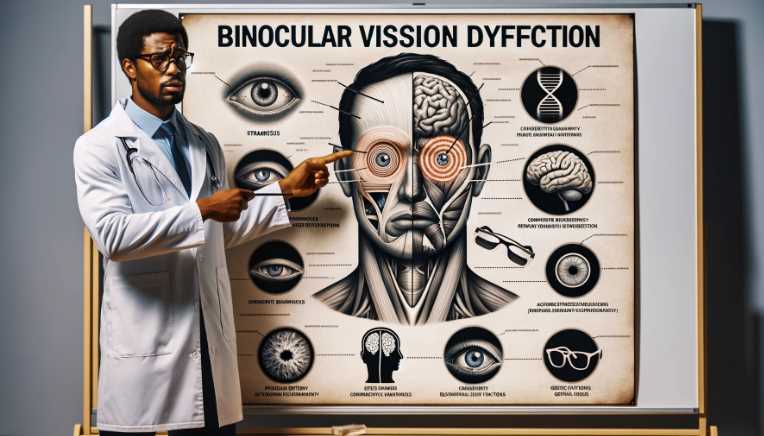
Untreated Binocular Vision Dysfunction may contribute to additional visual problems, such as amblyopia (lazy eye) or difficulties with coordination. Early detection and intervention can help prevent the development of further complications.
How can I prevent Binocular Vision Dysfunction?
While some factors contributing to BVD may be beyond control, adopting healthy eye habits can promote overall visual well-being. These habits include regular eye check-ups, maintaining good posture, and taking breaks during extended periods of visual concentration.
Final Words
As we conclude this exploration, the narrative transforms from a mere informational guide to a personal journey shared. Binocular Vision Dysfunction, with its challenges, is not a dead-end but a detour. By acknowledging, understanding, and navigating through the complexities, we pave the way for clearer sight and a brighter future. Let this be a testament to the resilience of the human spirit, adapting and thriving even when faced with the unexpected twists and turns of our visual journey.
Resources and References:
- American Optometric Association. (n.d.). Comprehensive Eye Exams.
- Optometrists Network. (n.d.). Vision Therapy FAQ.

I am an enthusiastic student of optics, so I may be biased when I say that optics is one of the most critical fields. It doesn’t matter what type of optics you are talking about – optics for astronomy, medicine, engineering, or pleasure – all types are essential.
Table of Contents
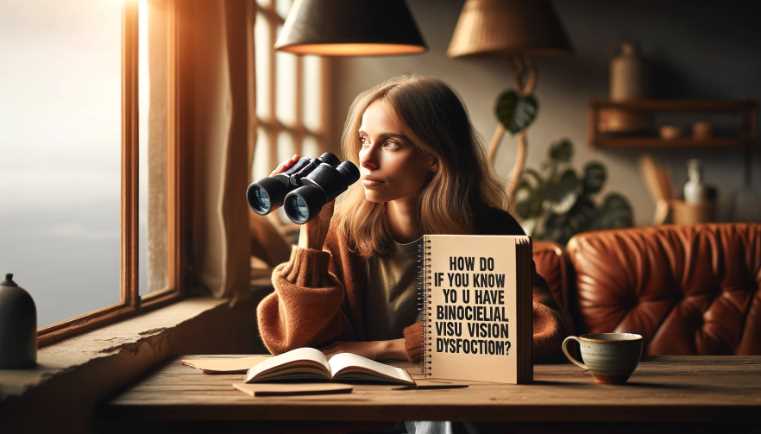
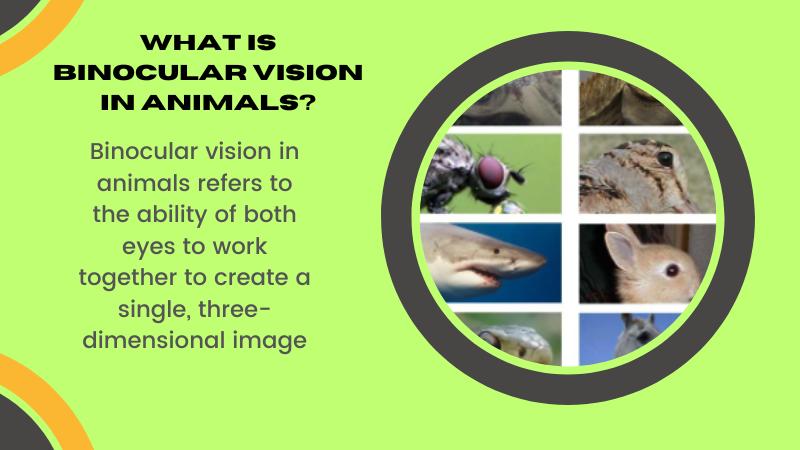
Pingback: Binocular Vision Dysfunction: Is it a Disability?